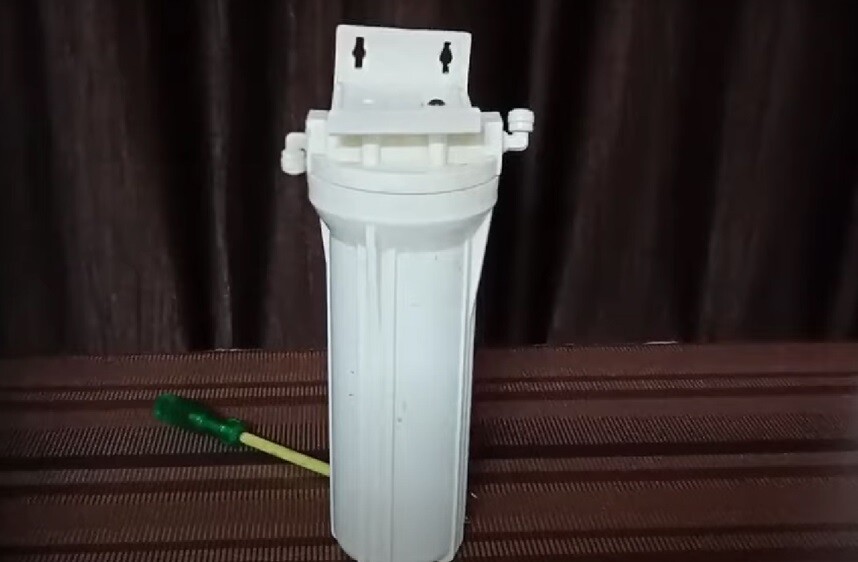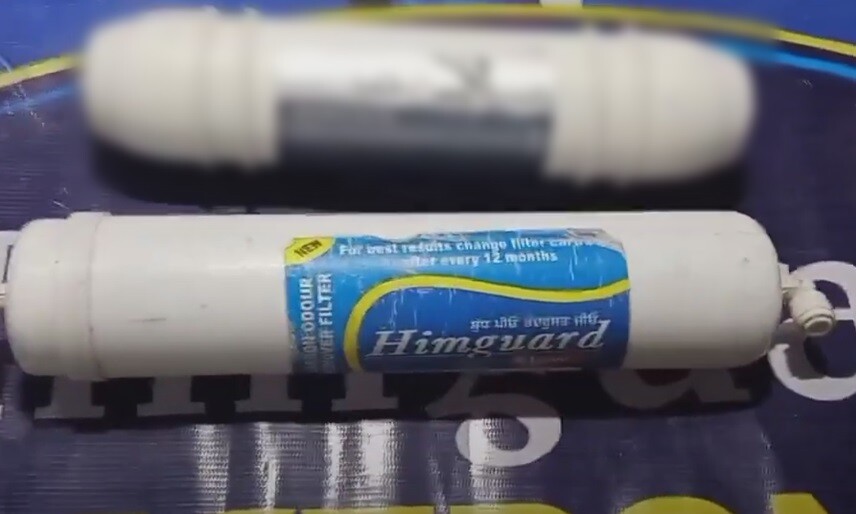Is your water purifier slowing down and not filling quickly? If so, we are here to help you understand how to fix this issue at home. In this article, we will discuss how to clean a water filter and reuse it.
Before we dive into this comprehensive, step-by-step guide, we need to first look at what is water filter and their types, and how to clean it.
What is a Water Filter, and What are Its Types?
Let’s begin by understanding what is water filter.
A water filter is like a superhero for your water! It’s a handy device that comes to the rescue, removing all the undesirable elements in your water.
It ensures that what you drink is really clean, safe, and free from any impurities. It’s like a little champion for your hydration, making sure every sip is pure and good for you!
Let’s explore the different types:
- Prefilter
- Sediment filters
- Carbon filters
- Reverse osmosis membrane filters
Okay, so we are specifically focusing on water purifier filters and how to clean them. But before we proceed with our next topic, we need to clarify why we have to clean our water filter.
Why should you drink purified water and Clean Your Water Filter?
Purified water is extremely important for everyone. How?
We use it for everything – drinking, cooking, even for everyday tasks like taking a bath or doing laundry. It’s not just good for our health; it also helps keep everything around us nice and clean.
Now, you might be thinking tap water seems okay, right?
Well, it might look okay, but there’s more to it. Tap water can contain elements that can make us sick, such as bacteria, viruses, and chemicals like fluorine compounds, chlorine, mercury, lead, and pesticides.
So, what happens if you drink water that’s not clean?
Drinking not-so-clean water can lead to serious health problems. Research indicates it can cause diseases like diarrhea, cholera, dysentery, typhoid, and polio.
It’s even estimated to cause 502,000 deaths from diarrhea every year. So, having access to clean water is a pretty big deal for staying healthy!
Now, what we learn is that clean water is like our health insurance – it keeps us safe and sound!
How to Clean a Filter & Reuse It: Step-by-Step
Finally, we arrive here to explore how we can reuse our existing filter and clean it.
If you recall what we learned above, we know the types of water filters, such as:
- Prefilter
- Sediment
- Carbon
- Reverse osmosis
Now, let’s begin with the Prefilter. What is it, and how can we clean it? Below, you’ll see an image of the prefilter.
Prefilter
What is a prefilter? This filter is typically installed outside the water system. The prefilter’s role is to manage mud and visible impurities in the water. Follow the instructions below to clean this filter and reuse it.

Follow these instructions to clean the prefilter.
- Turn off the inlet wall switch to stop water from entering the prefilter.
- Hang out from the wall and open the prefilter. You will need a spanner to open it, or you can get help from another person. Tighten your grip on it and rotate it to unlock.
- In the third step, remove the spun from the prefilter housing. You will notice that dirt has accumulated on the filter.
- It’s time to clean the filter. Open your tap water and place the filter underneath it. Slowly place the filter under the pressure of the drain and give it a jerk.
- Repeat the same steps till all dirt is removed.
- We have remaining to clean the prefilter housing. Wash the prefilter with dish soap.
- Now, it is time to wrap up. Insert the spun into the prefilter housing, rotate it, and tighten it.
Sediment Filter :
What is a sediment filter, and what is the purpose of this filter? The sediment filter is the initial cartridge in the water purifier through which water circulates. The function of this filter is to remove suspended particles such as dirt, sand, and dust.

To Clean this filter simply follow our instructions.
- Firstly, remove the water purifier from the wall and open the purifier cover, regardless of its type.
- Remove all pipes wisely and remember which pipe is connected where.
- Now, observe the mark for the water flow, then connect the water pipe from the reverse side. Note the water with full pressure. After that, gently tap it with a screwdriver on its cover.
- Continuously connect the water pipe with the sediment filter for 5 to 10 minutes. Tap slowly with a screwdriver on the filter cover until all sand and dirt are removed.
- Finally, the filter is clean; reuse it in your RO.
Carbon Filter (Chemiblock ):
Chemiblock is made from charcoal, and this filter plays a vital role in RO. Its uses include removing unnecessary chemicals and organic compounds.
Like: chlorine, pesticides, and others.

Instructions :
- As we discussed above clean the sediment filter from the reverse side.
- Follow the same steps I have shown you after that inject the pipe into the flow side and reverse side follow this step 5 to 10 times until the water comes clean in the filters.
Alright, so we’ve properly washed and cleaned our two filters, and now let’s move on to the next point. Before proceeding, it’s important to note that the RO membrane and reverse osmosis come in two shapes: one is an Opentap membrane, and the second is a Shield membrane.
The issue is that we washed and cleaned our open tap membrane, but we are unable to clean our Shield membrane.
Certainly! Shall we proceed to our next step? How to clean our RO membrane.
Reverse osmosis ( RO Membrane ):
An RO membrane is the main and most important filter in the reverse osmosis system.
The RO membrane employs NF technology nanofiltration, which effectively removes unnecessary pollutants, solid particles, large molecules, and minerals.
The membrane operates with a semi-permeable layer containing minute pores.
This semi-permeable membrane allows only pure water to pass through, while the polluted water is expelled through the reject pipe.

Follow these instructions to clean the RO membrane:
- Disconnect all pipes from filters and the membrane; take it out from the purifier.
- Open the membrane housing and remove the membrane from the housing.
- You will need a booster pump and SMPS to clean the RO membrane.
- Wash the membrane gently with water, put it back in the housing, and close it tightly.
- Connect the SMPS wire with the booster pump.
- Take a bucket, as shown in the picture uploaded, and fill it with some water.
- Take a pipe, place one end in the bucket, and connect the other end to the booster pump.
- Connect the motor outgoing pipe to the membrane inlet, then switch on the SMPS plug to start the motor.
- Put citric acid in the bucket. After that, place the reject pipe and the inlet pipe into the bucket, allowing the water to circulate within it, both in the inlet and outlet.
- Once completed, reconnect the pipes in the same way as when they were removed from the filter.
Benefits of Using an RO Water Purifier:
Did you Know the numerous Benefits of RO water purifiers, which include the removal of pollutants, solid particles, and harmful minerals? The semi-permeable membrane ensures that only pure water passes through, safeguarding your health.
In conclusion,
regular cleaning and maintenance of your water filter are essential to ensure a continuous supply of clean and safe water.
Follow these steps to rejuvenate your water filter, contributing to a healthier lifestyle. Cheers to clean water and good health!
You might also like,








